Pearl Zhu's Blog, page 1265
December 30, 2016
The New Book “100 Creativity Ingredients” Conclusion: Unlock Creativity via Daily Practices
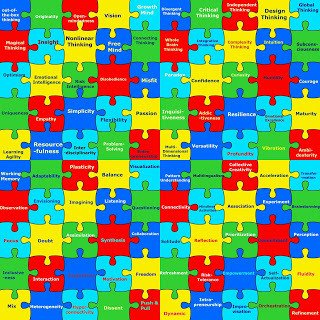 Creativity becomes significantly important in the age with the advanced technologies because the digital workforce of the future will not be mere automatons, but continue to discover, explore, and improve the surroundings. Hence, it is important to set your own principles, practice, practice, and practice more to ignite the abundance of creativity.
Creativity becomes significantly important in the age with the advanced technologies because the digital workforce of the future will not be mere automatons, but continue to discover, explore, and improve the surroundings. Hence, it is important to set your own principles, practice, practice, and practice more to ignite the abundance of creativity.
Blend unique ingredients to fuel creativity: As we discussed in this book, there are so many unique ingredients to make “creativity formula.” There is a combination of intrinsic and extrinsic elements to trigger creativity. On one hand, you need to have the level of curiosity, learning agility, open and inquisitive mind, unique observation, and in-depth understanding; on the other hand, it is critical to have a motivational environment to inspire creativity and encourage innovation, bridge cognitive gaps, fertilize growth mindset and let creative minds soar. Creative people leverage emergent, divergent, and convergent thought processes to ignite creativity.
Encourage creative problem-solving: Creativity needs a problem; creative people are both problem finders and problem solvers. Creativity demands the possibility of the wrong in order to be exploring in a free and playful way. Creatives always ask open questions which lead to discovering situations others do not see at first. The essential to questioning stimulates the creative side of our brains in order to find answers. Creativity is a symbol of life, people who thrive as creative problem-solvers have developed a series of habits to connect the dots effortlessly and trigger creativity frequently.
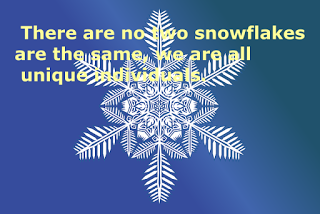 Be courageous to get out of the “fear” and take the risks: Creativity is all about breaking down the conventional wisdom or outdated rules, and reimagine the better way to do things, and there is no innovation without risk-taking. Individuals need to step outside the box or the comfort zone and challenge perception, push themselves to the limit, their limit. The ideas come and go, and above all, we must instead leave them free, do not be afraid to say what we think or make a fool, keep your creativity flow, and get out of the fear that blocks your genius, learn how to liberate imagination and come up with a new approach to the world. The evolution of innovation only exists in the more open environments that create insights, take advantage of all sources of creativity in a more open way.
Be courageous to get out of the “fear” and take the risks: Creativity is all about breaking down the conventional wisdom or outdated rules, and reimagine the better way to do things, and there is no innovation without risk-taking. Individuals need to step outside the box or the comfort zone and challenge perception, push themselves to the limit, their limit. The ideas come and go, and above all, we must instead leave them free, do not be afraid to say what we think or make a fool, keep your creativity flow, and get out of the fear that blocks your genius, learn how to liberate imagination and come up with a new approach to the world. The evolution of innovation only exists in the more open environments that create insights, take advantage of all sources of creativity in a more open way. Every person has the ability to be creative, just tearing down the mental barriers they have and tapping in their inherent ability. Creativity is the potential which can be unlocked and innovation is the serendipity which can be unpuzzled. It is only when all individuals challenge themselves and then come together as a group, will we see real human potential achieved. Follow us at: @Pearl_Zhu
Published on December 30, 2016 23:08
December 29, 2016
The Weekly Insight of the “Future of CIO” 12/29/ 2016
 The “Future of CIO” Blog has reached 1.5 million page views with 3300+ blog posting in 59+ different categories of leadership, management, strategy, digitalization, change/talent, etc. The content richness is not for its own sake, but to convey the vision and share the wisdom. Here is the weekly insight about digital leadership, IT Management, and Talent Management.
The “Future of CIO” Blog has reached 1.5 million page views with 3300+ blog posting in 59+ different categories of leadership, management, strategy, digitalization, change/talent, etc. The content richness is not for its own sake, but to convey the vision and share the wisdom. Here is the weekly insight about digital leadership, IT Management, and Talent Management.
The Weekly Insight of the “Future of CIO” 12/29/2016The new book “100 Creativity Ingredients -Everyone’s Playbook to Unlock Creativity” Chapter 1: Intellectual Ingredients, Slideshare: Creativity is not a “thing,” it’s a process that happens as a proactive mental activity to a problem. The nature of consciousness is important in creativity. Creativity is the high level of thinking, and thinking is probably one of the most difficult things for human beings, the thinking capability well defines the difference between humans and other creatures, and the level of thinking may also well reflect who we are. The Nature and Nurture of Digital CIOs Due to changing nature of technology and multifaceted impact of modern IT organization, the CIO is perhaps one of the most sophisticated leadership roles in the digital transformation. The role of the Chief Information Officer is a very tricky one and hard to fill. The problem is heavily masked because the position is often filled with the wrong person. Contemporary CIOs are expected to play multiple personas; besides being the tactical IT manager, leadership is considered the top attribute for CIOs. So are digital CIOs nature or nurtured? What are the most important attributes of IT leadership, and how can they best be attained?
Setting Principles to Evaluate Decision-Making Scenario: Decision maturity is to ensure the right decisions have been made by the right people at the right time with the right mix of information and intuition. It is important to differ decision maturity from decision outcomes. Decision maturity can be achieved via both improving decision efficiency and effectiveness. Decision efficiency is a measure of how well resources are used, information are retrieved, and processes are adjusted to make decisions; it is value-free. Decision effectiveness is achieved via the quality of decision-makers and decision efficiency weighted by the values of the decision outcome achieved; it is value-full. It is important for setting principles to make an assessment of decision-making scenario.
 Five dimensions of Digital Transformation Modern IT organizations play a critical role in driving the digital transformation of the entire company. The CIO has to look forward and actively position the business in the right place to take full advantage of opportunities and emergent digital technology trends. DRIVING is not a passive activity. The role of modern CIO is to identify and blend the processes and practices that information and technology can assist and shape the business by linking all digital aspects together to enforce the value creation and drive digital transformation from multidimensional perspectives.
Five dimensions of Digital Transformation Modern IT organizations play a critical role in driving the digital transformation of the entire company. The CIO has to look forward and actively position the business in the right place to take full advantage of opportunities and emergent digital technology trends. DRIVING is not a passive activity. The role of modern CIO is to identify and blend the processes and practices that information and technology can assist and shape the business by linking all digital aspects together to enforce the value creation and drive digital transformation from multidimensional perspectives.
The Popular Quotes Collection V in “Digital Master” Book Series: “Digital Master” is the series of guidebooks (12+ books) to perceive the multifaceted impact digital is making to the business and our society, help forward-thinking organizations navigate through the digital journey in a systematic way, and avoid “rogue digital.” Here is the set of popular quotes for conveying the digital vision and sharing the unique insight about the digital transformation.
Blogging is not about writing, but about thinking and innovating the new ideas; it’s not just about WHAT to say, but about WHY to say, and HOW to say it. It reflects the color and shade of your thought patterns, and it indicates the peaks and curves of your thinking waves. Unlike pure entertainment, quality and professional content takes time for digesting, contemplation and engaging, and therefore, it takes the time to attract the "hungry minds" and the "deep souls." It’s the journey to amplify diverse voices and deepen digital footprints, and it's the way to harness your innovative spirit.
Follow us at: @Pearl_Zhu
Published on December 29, 2016 23:26
Navigating IT Digital Transformation via Inquiries
 Digital is the age of choices; just like consumers have more options to shop via multi-channel platforms; organizations also have more opportunities and risks as well in scaling or innovating their businesses. It is important to make an objective assessment and navigate digital transformation via inquiries.
Digital is the age of choices; just like consumers have more options to shop via multi-channel platforms; organizations also have more opportunities and risks as well in scaling or innovating their businesses. It is important to make an objective assessment and navigate digital transformation via inquiries.
Is a major transformation necessary? As every successful change or business transformation program, the business management should follow the 'Golden Circle' starting with the WHY? (motivation), then addressing the HOW? (process) and the WHAT? (results) at the end. Organizations today need to constantly improve the business and seeing change as an opportunity while keeping a holistic overview of the business growth for the long term. A digital paradigm is an emerging digital ecosystem of principles, policies, and practices that set limits or boundaries; and also offer the guidance for problem-solving or creating something new under the digital rules. Organizations and their people learn through their interaction with the environment. They act, observe the consequences of their actions, make inferences about those consequences and draw implications for future action. To achieve such a state of dynamic balance, a radically different social and economic structure will be needed.
Is the current state of your organization optimal for the type of transformation you are choosing? Transformation starts with the realization that where you are currently no long can deliver the business objective and vision of success for your company and your shareholders. The more you can clearly paint the image of why the company is in the situation it is in and provide the vision of a new world, the better it is. Determining what the future needs to look like (what the transformation must look like) is the next step. It is important to keep the communications open, as well as keeping people focused on things they can control. You have to create an environment where people can be successful. In line with being open and honest balance the major change, embed it amongst the current perception and comprehension of the overall position and direction and then relativity will kick in, people will set their own priorities, take ownership and act. So the organization of the future starts with a changing nature.
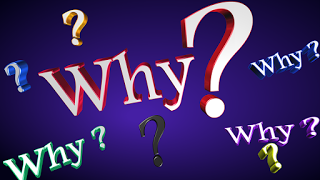 Do you need to transform your IT organization before transforming the business? Every CIO should be capable of having a vision and not just living inside of the IT box. They must be able to understand the business strategy, the operations strategy, and the IT strategy. The CIO must be able to work with fellow C-level executives to contribute to the vision and direction of the company. The CIO should be able to envision not only where a company believes it is going, but how it will get there, and how it might be missing out on opportunities because of limitations on understanding. Further, they should not only be able to align IT to business but formulate ways to drive business. Therefore, the CIO has to have the capability to look ahead and imagine what is possible for his/her organization as part of the whole, then execute the right options as part of the overall vision for the firm/company via logic steps
Do you need to transform your IT organization before transforming the business? Every CIO should be capable of having a vision and not just living inside of the IT box. They must be able to understand the business strategy, the operations strategy, and the IT strategy. The CIO must be able to work with fellow C-level executives to contribute to the vision and direction of the company. The CIO should be able to envision not only where a company believes it is going, but how it will get there, and how it might be missing out on opportunities because of limitations on understanding. Further, they should not only be able to align IT to business but formulate ways to drive business. Therefore, the CIO has to have the capability to look ahead and imagine what is possible for his/her organization as part of the whole, then execute the right options as part of the overall vision for the firm/company via logic steps
Digital transformation is a long-term journey, it has to be clearly understood and to satisfy both short term gratification and long term outcomes. It is the transformation that is reshaping our thinking and recasting the way we view ourselves, the systems of which we are the part of the environments in which we live, and the way we run the business and improve its effectiveness, efficiency, and maturity.
Follow us at: @Pearl_Zhu
Published on December 29, 2016 23:22
The New Book “100 Creativity Ingredients” Introduction Chapter 5 Motivational Ingredients
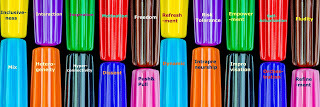 Creativity is a function of imagination, knowledge, psychology, activities, and evaluation. Creativity has many forms and manifestations. Take the standpoint that creativity has its starting point within an individual. Creativity can manifest in a collective environment as well. While the individual contributions provide the “building block” of creativity, it is the collective consensus on what to do with them that is exciting. The motivation for innovation is not just because it would make work better. It’s because of the need, the urgency, the competition, the acquisition of some new capacity that creates the difference between “should” and “is.”
Creativity is a function of imagination, knowledge, psychology, activities, and evaluation. Creativity has many forms and manifestations. Take the standpoint that creativity has its starting point within an individual. Creativity can manifest in a collective environment as well. While the individual contributions provide the “building block” of creativity, it is the collective consensus on what to do with them that is exciting. The motivation for innovation is not just because it would make work better. It’s because of the need, the urgency, the competition, the acquisition of some new capacity that creates the difference between “should” and “is.”
Motivation: Self-motivation is a significant component in the expression of creativity. While we each have the enormous creative capacity, our willingness to exercise and express it becomes more complicated. Motivating requires giving someone a “motive,” usually self-interest along the line. In order to build a culture of creativity, in an organizational context, it’s important to develop the process of the corporate pulse that identifies where the pulse/passion/motivation/commitment of the organization lies, and who embodies it. A desire mind is a necessary element of motivation to transform inward driven creativity into outward driven innovation. The purpose is the greatest motivator; a deep desire to make the world a better place and fueled by a sense of gratitude and responsibility that compels you to stay committed.
Mix: Creativity has a language, but it is altogether different from the one found in the business environment. There is an idea of “productive friction” and “creative tension” via building an innovative team with mixing cognitive differences, personalities, skills, or capabilities, as the way of encouraging and instilling creative environment. The challenge for organizations is to manage its portfolio of relevant cross-border strategic synergies and organizational interdependence with the appropriate mix of enabling organizational elements (people, process, and technology), engaging digital talent in innovation and balancing creativity and efficiency, innovation and standardization.
 Push and Pull: Good ideas are multidimensional, so execution also needs forces of both “push and pull.” People need permission to push ideas around an organization without the fear of failure and without the need to deliver against a short-term narrow-focused objective. It is also critical to pulling the resources to build an innovation nurturing the working environment. The bottom line is, for any company to succeed in innovation, it is essential for the entire company to be pulling in the right direction, and people need to be empowered to push ideas forward. Innovation dilemmas can only be solved by strong innovation leaders who understand these challenges and work to build a digital-ready organizational culture and structure to eliminate barriers and mind gaps to open the new chapter of innovation blossom.
Push and Pull: Good ideas are multidimensional, so execution also needs forces of both “push and pull.” People need permission to push ideas around an organization without the fear of failure and without the need to deliver against a short-term narrow-focused objective. It is also critical to pulling the resources to build an innovation nurturing the working environment. The bottom line is, for any company to succeed in innovation, it is essential for the entire company to be pulling in the right direction, and people need to be empowered to push ideas forward. Innovation dilemmas can only be solved by strong innovation leaders who understand these challenges and work to build a digital-ready organizational culture and structure to eliminate barriers and mind gaps to open the new chapter of innovation blossom.
From creativity starting within an individual to the point where it becomes external to them, it cannot be identical from one person to another. Any by manifesting creativity from an individual endeavor to a team activity and a collective effort, the horizon of creativity is expanded, it converges with the concept of innovation that is the management discipline to transform innate ideas and achieve its business value.
Follow us at: @Pearl_Zhu
Published on December 29, 2016 23:19
December 28, 2016
CIOs as “Chief Inquisitive Officer: A set of Q&As (V) for Dealing with IT Management Dilemmas
 Modern CIOs face many challenges, it is not sufficient to only keep the lights on. Regardless of which industry or the nature of organization you are in, being a digital leader will need to master the art of creating unique, differentiating value from piles of commoditized technologies and take advantage of the emergent digital trend as well; digital CIOs also have multiple personas, “Chief Innovation Officer,” “Chief Insight Officer,” “Chief Improvement Officer,” “Chief Information Officer,” and here, we discuss CIOs as “Chief Inquisitive Officer,” with a set of Q&As to lead digital transformation.
Modern CIOs face many challenges, it is not sufficient to only keep the lights on. Regardless of which industry or the nature of organization you are in, being a digital leader will need to master the art of creating unique, differentiating value from piles of commoditized technologies and take advantage of the emergent digital trend as well; digital CIOs also have multiple personas, “Chief Innovation Officer,” “Chief Insight Officer,” “Chief Improvement Officer,” “Chief Information Officer,” and here, we discuss CIOs as “Chief Inquisitive Officer,” with a set of Q&As to lead digital transformation.
Shall IT Lead or Follow: More often than not, technology is the catalyst for driving business change and digital transformation, however, in most of the companies, IT is still perceived as an order taker and support function, and most of IT organizations get stuck at the lower level of maturity for functional alignment or enabler. So should IT lead or follow? Should IT leadership rock the boat or just keep it afloat? And how to run digital IT with the high speed and agility?
IT Dilemma: Is Customer Always RIGHT: IT has always gone through this dilemma of "customers is always right" vs. "rational approach in designing a solution." If IT always see this as two conflicting forces pulling in opposite directions, you are most likely to get caught and always fall short of expectations. So what’s the right attitude in the face of such customer dilemma?
Is IT at Cross-Road? IT organizations are facing significant transformation, perhaps crossroad is an appropriate word to articulate IT position since CIOs seem to fall into two camps. The first is the "utility" CIO who competently manages a complex technology infrastructure, but is not on the "go to" list for implementing the strategy. The latter is "value" CIO who has delegated infrastructure management and well articulate how information and technology can accomplish the company’s strategic and tactical objectives. So what is next for CIOs beyond the crossroads? How can CIOs enable high performing organizations, and in return, their organizations leverage high-performing CIOs?
The Two Sides of IT: Which Side is More Important? The forward-looking IT organizations are on the journey of digital transformation. The challenge is having a harmonized vision about overall IT capabilities and maturities, and which role IT should, or can play in the digital organization. There are front end and back end of the IT department. The front end of IT is value-added, to drive the business’s digital transformation, and the back end of the IT is fundamental, operational driven and keep the lights on. From IT management and digital transformation perspective, how to run two sides of IT smoothly, via setting the right principles and developing the next practices?
 Which IT Management Dilemmas Do you Encounter? Technology is pervasive, business initiatives, changes, and transformation today nearly always involve some form of technology implementation or information analysis; IT touches both hard business processes and soft human behaviors. However, managing a highly effective IT is not an easy job, IT leaders have to overcome many change management roadblocks and deal with quite a few of IT management dilemmas in transforming from a cost center to value creator, from a support function to a strategic business partner; from a back office to an innovation front yard.
Which IT Management Dilemmas Do you Encounter? Technology is pervasive, business initiatives, changes, and transformation today nearly always involve some form of technology implementation or information analysis; IT touches both hard business processes and soft human behaviors. However, managing a highly effective IT is not an easy job, IT leaders have to overcome many change management roadblocks and deal with quite a few of IT management dilemmas in transforming from a cost center to value creator, from a support function to a strategic business partner; from a back office to an innovation front yard.
The digital CIOs need to reimagine IT as the business growth engine and lead changes via inquiries. They need to keep asking open-ended questions such as, "Why? Why not? What If?" They have to focus on guiding the company through the digital transformation, and create unique business value because IT is the significant element of any differentiated business capability and the defining factor for competitive advantage.
Follow us at: @Pearl_Zhu
Published on December 28, 2016 23:12
Setting Principles to Evaluate Decision-Making Scenario
If the decision-making scenario is well designed and well-executed, you have the highest probability of getting the best outcome in the state of knowledge accessible at the time of decision-making.
 Decision maturity is to ensure the right decisions have been made by the right people at the right time with the right mix of information and intuition. It is important to differ decision maturity from decision outcomes. Decision maturity can be achieved via both improving decision efficiency and effectiveness. Decision efficiency is a measure of how well resources are used, information are retrieved, and processes are adjusted to make decisions; it is value-free. Decision effectiveness is achieved via the quality of decision-makers and decision efficiency weighted by the values of the decision outcome achieved; it is value-full. It is important for setting principles to make an assessment of decision-making scenario.
Decision maturity is to ensure the right decisions have been made by the right people at the right time with the right mix of information and intuition. It is important to differ decision maturity from decision outcomes. Decision maturity can be achieved via both improving decision efficiency and effectiveness. Decision efficiency is a measure of how well resources are used, information are retrieved, and processes are adjusted to make decisions; it is value-free. Decision effectiveness is achieved via the quality of decision-makers and decision efficiency weighted by the values of the decision outcome achieved; it is value-full. It is important for setting principles to make an assessment of decision-making scenario.
Decision-making assessment starts with the decision-maker evaluation: There is no such a perfect decision maker; making the large, especially strategic decisions is not the easy task. In reality, many poor decisions are made by very intelligent people. But decision making is the professional capability which can be developed. The biggest challenge is knowing what you don’t know, it’s a reasonable moniker for decision-making blind spot and biases. It is the responsibility of each individual to examine themselves and to make sure they are open to true understanding. Often assumptions and prejudices are due to lack of deeper understanding. When you judge something, you form a critical opinion of it based on facts, discerned data, filtered information, and preconceived notions. Many times people make a poor judgment, not because of ignorance, but because of the lack of insight. Hence, a good judgment is a must for good decisions. So far wisdom and knowledge have evolved in humans with their eyes and ears open to understand.
Evaluating information and processes for decision-making: At today’s “VUCA” -volatile, uncertain, complex, and ambiguous digital dynamic, the importance of the process becomes critical as decisions become more complex and involve more diverse stakeholders. Making sound processes to frame decision is critical. You need a sound process to frame the decision, spec out your options, weigh them appropriately with the right people, and actually make a decision. So the half of the battle is framing the question appropriately. An essential part of the 'framing process' is to understanding what your high-level outcomes are related to the issue, opportunity or problem. You cannot choose between alternatives without being clear about your desired outcome. With an effective process, if you mine, cleanse and improve the data to produce information, then combine that information and visualize it in different ways, then you gain organizational knowledge and from that knowledge, you can make excellent tactical decisions. Always attempt to identify areas in which measurable improvements can be realized, providing demonstrable value is essential.
 There is a distinction between the effective decision-making and good outcomes: Even you should be very clear about your desired outcome, there is a clear distinction between a good decision and a good outcome. In the world of uncertainty and ambiguity, the mind with decision wisdom can, by definition, not control the outcome, however, focus on making effective decisions and the best chance for a good outcome is to make a good decision. If the decision-making scenario is well designed and well-executed, you have the highest probability of getting the best outcome in the state of knowledge accessible at the time of decision-making. The decision at hand and the criteria prescribed should drive the data, with the understanding that scenario analysis may require more iterations of information or interdisciplinary knowledge. Evaluating decision outcomes will help the decision makers learn lessons that will improve the decision-making maturity.
There is a distinction between the effective decision-making and good outcomes: Even you should be very clear about your desired outcome, there is a clear distinction between a good decision and a good outcome. In the world of uncertainty and ambiguity, the mind with decision wisdom can, by definition, not control the outcome, however, focus on making effective decisions and the best chance for a good outcome is to make a good decision. If the decision-making scenario is well designed and well-executed, you have the highest probability of getting the best outcome in the state of knowledge accessible at the time of decision-making. The decision at hand and the criteria prescribed should drive the data, with the understanding that scenario analysis may require more iterations of information or interdisciplinary knowledge. Evaluating decision outcomes will help the decision makers learn lessons that will improve the decision-making maturity.
At the digital era, making sound decisions means to leverage analytical thinking, practical frameworks, advanced analytic tools, the human’s intuition, and add the “wisdom’ in the decision process to improve the overall effectiveness of decision making and achieve overall decision maturity.
Follow us at: @Pearl_Zhu
 Decision maturity is to ensure the right decisions have been made by the right people at the right time with the right mix of information and intuition. It is important to differ decision maturity from decision outcomes. Decision maturity can be achieved via both improving decision efficiency and effectiveness. Decision efficiency is a measure of how well resources are used, information are retrieved, and processes are adjusted to make decisions; it is value-free. Decision effectiveness is achieved via the quality of decision-makers and decision efficiency weighted by the values of the decision outcome achieved; it is value-full. It is important for setting principles to make an assessment of decision-making scenario.
Decision maturity is to ensure the right decisions have been made by the right people at the right time with the right mix of information and intuition. It is important to differ decision maturity from decision outcomes. Decision maturity can be achieved via both improving decision efficiency and effectiveness. Decision efficiency is a measure of how well resources are used, information are retrieved, and processes are adjusted to make decisions; it is value-free. Decision effectiveness is achieved via the quality of decision-makers and decision efficiency weighted by the values of the decision outcome achieved; it is value-full. It is important for setting principles to make an assessment of decision-making scenario.Decision-making assessment starts with the decision-maker evaluation: There is no such a perfect decision maker; making the large, especially strategic decisions is not the easy task. In reality, many poor decisions are made by very intelligent people. But decision making is the professional capability which can be developed. The biggest challenge is knowing what you don’t know, it’s a reasonable moniker for decision-making blind spot and biases. It is the responsibility of each individual to examine themselves and to make sure they are open to true understanding. Often assumptions and prejudices are due to lack of deeper understanding. When you judge something, you form a critical opinion of it based on facts, discerned data, filtered information, and preconceived notions. Many times people make a poor judgment, not because of ignorance, but because of the lack of insight. Hence, a good judgment is a must for good decisions. So far wisdom and knowledge have evolved in humans with their eyes and ears open to understand.
Evaluating information and processes for decision-making: At today’s “VUCA” -volatile, uncertain, complex, and ambiguous digital dynamic, the importance of the process becomes critical as decisions become more complex and involve more diverse stakeholders. Making sound processes to frame decision is critical. You need a sound process to frame the decision, spec out your options, weigh them appropriately with the right people, and actually make a decision. So the half of the battle is framing the question appropriately. An essential part of the 'framing process' is to understanding what your high-level outcomes are related to the issue, opportunity or problem. You cannot choose between alternatives without being clear about your desired outcome. With an effective process, if you mine, cleanse and improve the data to produce information, then combine that information and visualize it in different ways, then you gain organizational knowledge and from that knowledge, you can make excellent tactical decisions. Always attempt to identify areas in which measurable improvements can be realized, providing demonstrable value is essential.
 There is a distinction between the effective decision-making and good outcomes: Even you should be very clear about your desired outcome, there is a clear distinction between a good decision and a good outcome. In the world of uncertainty and ambiguity, the mind with decision wisdom can, by definition, not control the outcome, however, focus on making effective decisions and the best chance for a good outcome is to make a good decision. If the decision-making scenario is well designed and well-executed, you have the highest probability of getting the best outcome in the state of knowledge accessible at the time of decision-making. The decision at hand and the criteria prescribed should drive the data, with the understanding that scenario analysis may require more iterations of information or interdisciplinary knowledge. Evaluating decision outcomes will help the decision makers learn lessons that will improve the decision-making maturity.
There is a distinction between the effective decision-making and good outcomes: Even you should be very clear about your desired outcome, there is a clear distinction between a good decision and a good outcome. In the world of uncertainty and ambiguity, the mind with decision wisdom can, by definition, not control the outcome, however, focus on making effective decisions and the best chance for a good outcome is to make a good decision. If the decision-making scenario is well designed and well-executed, you have the highest probability of getting the best outcome in the state of knowledge accessible at the time of decision-making. The decision at hand and the criteria prescribed should drive the data, with the understanding that scenario analysis may require more iterations of information or interdisciplinary knowledge. Evaluating decision outcomes will help the decision makers learn lessons that will improve the decision-making maturity.
At the digital era, making sound decisions means to leverage analytical thinking, practical frameworks, advanced analytic tools, the human’s intuition, and add the “wisdom’ in the decision process to improve the overall effectiveness of decision making and achieve overall decision maturity.
Follow us at: @Pearl_Zhu
Published on December 28, 2016 23:10
Three Aspects in Decision-Making Evaluation
 Decision maturity is to ensure the right decisions have been made by the right people at the right time with the right mix of information and intuition. It is important to differ decision maturity from decision outcomes. Decision maturity can be achieved via both improving decision efficiency and effectiveness. Decision efficiency is a measure of how well resources are used, information are retrieved, and processes are adjusted to make decisions; it is value-free. Decision effectiveness is achieved via the quality of decision-makers and decision efficiency weighted by the values of the decision outcome achieved; it is value-full.
Decision maturity is to ensure the right decisions have been made by the right people at the right time with the right mix of information and intuition. It is important to differ decision maturity from decision outcomes. Decision maturity can be achieved via both improving decision efficiency and effectiveness. Decision efficiency is a measure of how well resources are used, information are retrieved, and processes are adjusted to make decisions; it is value-free. Decision effectiveness is achieved via the quality of decision-makers and decision efficiency weighted by the values of the decision outcome achieved; it is value-full.
Evaluating decision-makers: Decision-making assessment starts with the decision-maker evaluation. There is no such a perfect decision maker; making the large, especially strategic decisions is not the easy task. In reality, many poor decisions are made by very intelligent people. But decision making is the professional capability which can be built. The biggest challenge is knowing what you don’t know, it’s a reasonable moniker for decision-making blind spot and biases. It is the responsibility of each individual to examine themselves and to make sure they are open to true understanding. Often assumptions and prejudices are due to lack of deeper understanding. When you judge something, you form a critical opinion of it based on facts, discerned data, and preconceived notions. Many times people make a poor judgment, not because of ignorance, but because of the lack of insight. Hence, a good judgment is a must for good decisions. So far wisdom and knowledge have evolved in humans with their eyes and ears open to understand.
Evaluating information and processes for decision-making: At today’s “VUCA” -volatile, uncertain, complex, and ambiguous digital dynamic, the importance of the process becomes critical as decisions become more complex and involve more diverse stakeholders. Making sound processes to frame decision is critical. You need a sound process to frame the decision, spec out your options, weigh them appropriately with the right people, and actually make a decision. So the half the battle is framing the question appropriately. An essential part of the 'framing process' is to understanding what your high-level outcomes are related to the issue, opportunity or problem. You cannot choose between alternatives without being clear about your desired outcome. With an effective process, if you mine, cleanse and improve the data to produce information, then combine that information and visualize it in different ways, then you gain organizational knowledge and from that knowledge, you can make excellent tactical decisions.
 Differentiating good decisions and good outcomes: Even you should be very clear about your desired outcome, there is a clear distinction between a good decision and a good outcome. In the world of uncertainty and ambiguity, the mind with decision wisdom can, by definition, not control the outcome, however, focus on making effective decisions and the best chance for a good outcome is to make a good decision. The decision at hand and the criteria prescribed should drive the data, with the understanding that scenario analysis may require more iterations of information or interdisciplinary knowledge. Evaluating decision outcomes will help the decision makers learn lessons that will improve their decision-making maturity. Always attempt to identify areas in which measurable improvements can be realized, providing demonstrable value is essential.
Differentiating good decisions and good outcomes: Even you should be very clear about your desired outcome, there is a clear distinction between a good decision and a good outcome. In the world of uncertainty and ambiguity, the mind with decision wisdom can, by definition, not control the outcome, however, focus on making effective decisions and the best chance for a good outcome is to make a good decision. The decision at hand and the criteria prescribed should drive the data, with the understanding that scenario analysis may require more iterations of information or interdisciplinary knowledge. Evaluating decision outcomes will help the decision makers learn lessons that will improve their decision-making maturity. Always attempt to identify areas in which measurable improvements can be realized, providing demonstrable value is essential.
At the digital era, making sound decisions means to leverage analytical thinking, advanced analytic tools, the human’s intuition, and add the “wisdom’ in the decision process to improve the overall effectiveness of decision making and achieve decision maturity.
Follow us at: @Pearl_Zhu
Published on December 28, 2016 23:10
The New Book “100 Creativity Ingredients” Introduction: Chapter IV: Creative Activity Ingredients
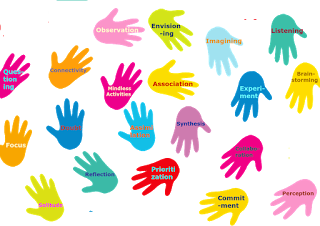 Today’s digital professionals are innovative workers, hard workers, knowledge workers and intelligent workers who are exploring, innovating and evolving in bringing new digital paradigms. Unleashing creativity is a journey and flexing creativity muscle is a continuous practice. Creative people bring in bright, original and creative ideas, they have an infectious enthusiasm for making things better, They continually and constructively challenge the status quo and have positive ideas for improvement.
Today’s digital professionals are innovative workers, hard workers, knowledge workers and intelligent workers who are exploring, innovating and evolving in bringing new digital paradigms. Unleashing creativity is a journey and flexing creativity muscle is a continuous practice. Creative people bring in bright, original and creative ideas, they have an infectious enthusiasm for making things better, They continually and constructively challenge the status quo and have positive ideas for improvement.
Observation: Observation is an important ingredient of creativity, also a crucial stage in innovation. It is the state of being mindful and conscious about the surrounding. Observation is not just about seeing, but understanding; what you see depends very much on what you are familiar with and on the parading, it’s contextual, and it’s a personal story. Creative observation means that you can see things from different angles, see above, underneath, and around the corner, to capture the new insight or ignite creativity. Like many things we do, observation needs a goal, and observers need a purpose. Quality observation brings unique perception and stimulates creativity.
Imagining: Creativity is part imagination and part knowledge. Imagination is the fuel for the “Creativity Engine.” Creativity is an actual project or idea carried out in a tangible way that offers or shows something new or imagined. No imagination, the engine will not run. Imagination is the ability to expand the boundaries of knowledge to grow into creativity. The creativity in the human sense is not due to connecting of two shallow pools of knowledge, but the ability to make deep connections and build on those connections to generate novel ideas. To put briefly, thinking things differently and making imagination roll into reality is creativity.
 Questioning: Creative people are both problem finders and problem solvers and always challenge conventional wisdom by asking questions which often lead to discovering situations others do not see at first. Creative people initiate the open and bold inquiries such as “Why Not,” or “What if.” Good questions evoke imagination and great questions inspire creativity. Even we ask the wrong questions, tell ourselves the wrong answers and creativity gives it all another chance to make it right. So it is important to build a culture of creativity and encourage inquisitiveness. Doesn’t the real solution to innovation or creativity begin with inquiry?
Questioning: Creative people are both problem finders and problem solvers and always challenge conventional wisdom by asking questions which often lead to discovering situations others do not see at first. Creative people initiate the open and bold inquiries such as “Why Not,” or “What if.” Good questions evoke imagination and great questions inspire creativity. Even we ask the wrong questions, tell ourselves the wrong answers and creativity gives it all another chance to make it right. So it is important to build a culture of creativity and encourage inquisitiveness. Doesn’t the real solution to innovation or creativity begin with inquiry?While we each have the enormous creative capacity, our willingness to express and exercise it becomes more complicated. Creative people are inspired to think and work nearly every day on creating, they are not waiting for such an “Aha” moment, but proactively stimulate the new energy with the fountain of creativity. After all, we all find new ways to make our work “easier,” more rewarding, better for ourselves, our customers and our society.Follow us at: @Pearl_Zhu
Published on December 28, 2016 23:07
December 27, 2016
CIOs as digital leaders: Five dimensions of Digital Transformation
 Modern IT organizations play a critical role in driving the digital transformation of the entire business. The CIO has to look forward and actively position the business in the right place to take full advantage of opportunities and emergent digital technology trends. DRIVING is not a passive activities. The role of modern CIO is to identify and blend the processes and practices that information and technology can assist and shape the business by linking all digital aspects together to enforce the value creation and drive digital transformation from multidimensional perspectives.
Modern IT organizations play a critical role in driving the digital transformation of the entire business. The CIO has to look forward and actively position the business in the right place to take full advantage of opportunities and emergent digital technology trends. DRIVING is not a passive activities. The role of modern CIO is to identify and blend the processes and practices that information and technology can assist and shape the business by linking all digital aspects together to enforce the value creation and drive digital transformation from multidimensional perspectives.
From competition to “coorpetition”: In the traditional organizational setting, IT vs. business mentality creates the gaps in strategy management and causes unhealthy competition for resource or budget management. With today’s digital hyperconnectivity and interdependence, it is time to step into the new hybrid era of “corpetition” (cooperation + competition). IT and business are the integral whole for achieving the well-defined business goals. It could also mean to encourage healthy competition and enforce innovation. Business leaders should set principles and disciplines to discern the positive motivation or negative energy behind competition. Whether we like it or not, as long as humans are unique, their mindsets, opinions, cultures, lives and views etc, are equally unique and diversified. That results in both collaboration and competition depending on the context and situations.
Understanding of end customer expectations and experience: Digital IT has two sets of customers: internal users and end customers. In order to transform IT from a cost center to revenue generator, IT has to understand the end customers’ expectation and help to optimize customer experience as well. Make sure it covers all prospect and customer touch points as well. Customer experience is being a main driver for differentiation and in the end profitability. Customer experience isn't about improving things for the customer at any cost. It's about having the real insight to make confident business decisions that result in unambiguous ROI. Either quantify the value of customer experience or qualify the management effort, keep the end in mind, the end is to delight customers and improve business prosperity and brand for the long term.
Organizational development needs to focus on improving employee engagement: IT is at the unique position to oversee underlying business functions and processes, and weave all important business elements (people, process, and technology) to build differentiated business competency. Hence, it is also critical to fine tune the organizational structure and development to focus on improving business effectiveness, employee engagement and overall business maturity. This requires that management starts with a complete and accurate diagnosis of the organization's current state, identifying any barriers to excellence that may exist, and then develop strategies for lowering or removing those barriers. Digital organizational development needs to manage the conflict between the classic industrial style and the digital style of management: Traditional management expects command-control, while digital professionals demand engagement. Traditional management views the performance from a behavioral compliance to norms world, digital professionals view performance as largely knowledge- based, dynamic change continuum.
IT as the linchpin of the business capabilities: Because modern CIOs are in the unique position to capture the oversight of business processes, projects, tools, cultures, and risk management, with the special lens focused on technology as a key element and the linchpin of the business capability. A typical capability lifecycle spans need, requirements, acquisition, in-service, obsolescence, and disposal.The dynamic digital organizations need to get away from letting things fall through and start creating “integrated wholes” by utilizing the correct processes to solve complexities, ultimately bridging the chasm between the business and IT. Enterprise capability management, in essence, consists of a portfolio or matrix of capabilities that are used in various combinations to achieve outcomes. In addition, business leaders are increasingly looking to the IT function for introducing beneficial change into their business models to improve strategic performance, achieve operational excellence, enforce customer intelligence and to position the enterprise for being the digital master.
 Agility to move quickly, adapt and change course: IT is like the “digital brain” of the organization to store, process information and capture the real-time business insights across the organization in way never possible befores. With these insights, organizations acquire the ability to reshape products, services, and customer engagement, move quickly and adapt to changes promptly. In the dynamic digital business ecosystem where change is significantly speeding up, that business leaders couldn’t predict the future with a certain degree of accuracy, and the strategy can no longer stay static, the business goals can no longer be well framed in advance. More often, organizations are too siloed to be able to relate coherently as a holistic business to the digital journey. When IT only takes orders as a support function, the organization has become "unconscious" because it is no longer responding to the external environment due to the lack of the business insight. A high-effective information-savvy digital IT can significantly improve the business agility based on self-adaptation as the capability to adapt to the change and make "conscious" business choices seamlessly.
Agility to move quickly, adapt and change course: IT is like the “digital brain” of the organization to store, process information and capture the real-time business insights across the organization in way never possible befores. With these insights, organizations acquire the ability to reshape products, services, and customer engagement, move quickly and adapt to changes promptly. In the dynamic digital business ecosystem where change is significantly speeding up, that business leaders couldn’t predict the future with a certain degree of accuracy, and the strategy can no longer stay static, the business goals can no longer be well framed in advance. More often, organizations are too siloed to be able to relate coherently as a holistic business to the digital journey. When IT only takes orders as a support function, the organization has become "unconscious" because it is no longer responding to the external environment due to the lack of the business insight. A high-effective information-savvy digital IT can significantly improve the business agility based on self-adaptation as the capability to adapt to the change and make "conscious" business choices seamlessly.
Transformation is a journey rather than a destination. At the high maturity level, organizations have to stretch out in every business dimension for driving the full-fledged digital transformation. IT must be a business partner within the organization and a digital CIO has to focus on guiding the company through those bumps and jumps, to both reap some quick wins and focus on the long term business results and prosperity.
Follow us at: @Pearl_Zhu
Published on December 27, 2016 22:46
The New Book “100 Creativity Ingredients” Introduction Chapter 3 Knowledge and Capability Ingredients
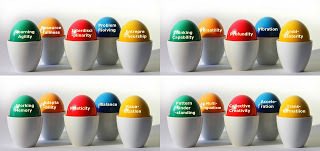 Creativity has just become indispensable. There is a philosophical connection between knowledge and creativity. Curiosity stimulates a need to gain knowledge, and knowledge is not just book knowledge, but intuitive knowledge feeds the imagination. At present days, we cannot separate knowledge and creativity if we want to stay competitive on the market. Innovation can happen everywhere; it is our gift as humans; a great deal of what defines us as humans.
Creativity has just become indispensable. There is a philosophical connection between knowledge and creativity. Curiosity stimulates a need to gain knowledge, and knowledge is not just book knowledge, but intuitive knowledge feeds the imagination. At present days, we cannot separate knowledge and creativity if we want to stay competitive on the market. Innovation can happen everywhere; it is our gift as humans; a great deal of what defines us as humans.
Learning Agility: Learning is a process and everyone has an enormous capacity to learn. Learning is multidimensional, dynamic, interactive and integrated. The mind with learning agility likes to experiment and is comfortable with changes. It can move out of the comfort zone, take risks, and learn from mistakes. It is an important element to spark creativity. Learning agility is related to manage things such as flexibility, changeability, robustness, sensitivity, comprehensiveness, speed, responsiveness etc. That is the multidimensional competencies to formulate creative, unconventional alternatives or solutions to resolve problems, to show versatility and flexibility in response to unpredictable or unanticipated circumstances.
Problem-solving: Creativity is the discovery of what has not yet been seen nor manifested. Creativity is to find better ways to do things. Creativity is a solution to a problem. Creativity is as much defined by the problem as by the capacity of the individual to connect things to resolve that problem in new and sometimes unexpected ways. There is as much creative thinking that goes into problem identification as solution finding. Creativity is the ability to both frame the questions and solve problems. In fact, framing the right problem is equally or even more important than solving it. Creative problem-solving starts with creative communication that sets alternative choices, and then you have to make best decisions you can, based on connecting unusual dots, identifying and prioritizing alternative solutions.
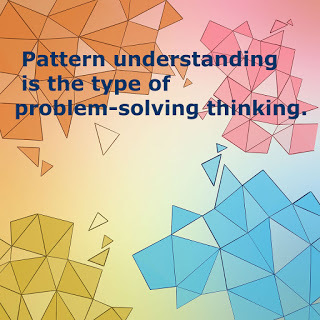 Pattern understanding: Pattern thinking and perception are critical ingredients of creativity. If you look at patterns, you will find that they are containers for describing relationships because that is what gives them their sense. The are defined as “solutions of problems in a context.” What could be in stronger relationship to us than something that solves a problem for us, pattern understanding is the type of problem-solving thinking. We “know” a lot of things, we also “know” that the multitude of these things is not necessarily just “true,” they might be potentially true, potentially partially true, potentially possibly true. Or we have “knowledge” about things that we do not necessarily know about what is “true,” but instead of “what is not true.” Pattern thinking does help us solve such jigsaw puzzles creatively. Pattern thinking requires you to keep your eyes open and keep your mind out of the box in order to shape the bigger box and actively seek out new ideas wherever you can discover them.
Pattern understanding: Pattern thinking and perception are critical ingredients of creativity. If you look at patterns, you will find that they are containers for describing relationships because that is what gives them their sense. The are defined as “solutions of problems in a context.” What could be in stronger relationship to us than something that solves a problem for us, pattern understanding is the type of problem-solving thinking. We “know” a lot of things, we also “know” that the multitude of these things is not necessarily just “true,” they might be potentially true, potentially partially true, potentially possibly true. Or we have “knowledge” about things that we do not necessarily know about what is “true,” but instead of “what is not true.” Pattern thinking does help us solve such jigsaw puzzles creatively. Pattern thinking requires you to keep your eyes open and keep your mind out of the box in order to shape the bigger box and actively seek out new ideas wherever you can discover them.Creativity is one of the most needed professional capabilities. And innovation is about progress whether it’s about new products, services, solutions, new sounds and music, new ways of reading and publishing, new ways of educating future of generations, etc. And the only sustainable competitive advantage is the ability to think different, grow and prosper by continually learning, innovating, adapting and evolving.Follow us at: @Pearl_Zhu
Published on December 27, 2016 22:43



